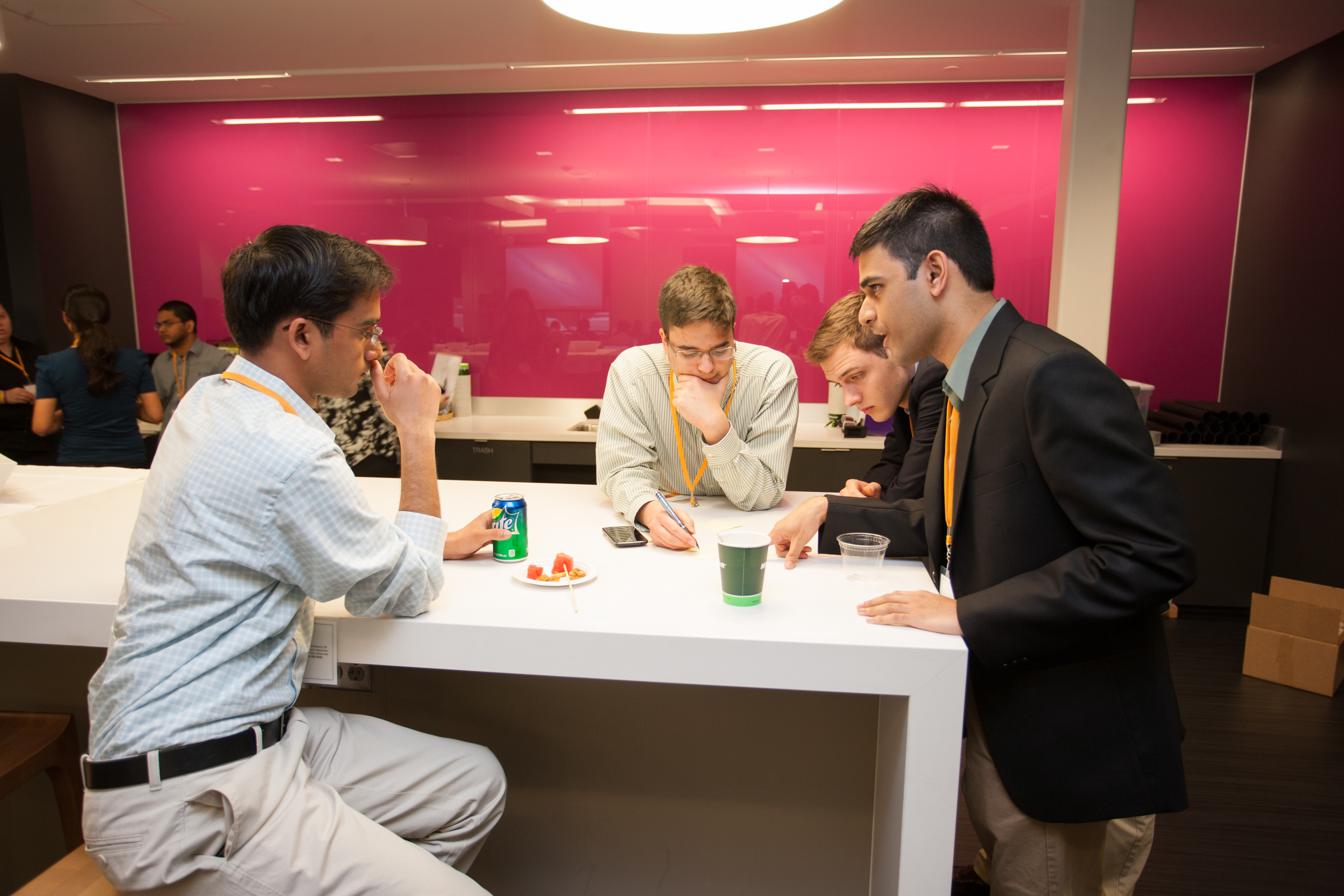A team of rising fourth-year engineering students from the University of Virginia’s School of Engineering and Applied Science has won the $5,000 first prize in the United States Imagine Cup Finals for Innovation, a competition hosted by Microsoft.
The team consists of Jonathon Blonchek, 20, of West Friendship, Md., a computer engineering major; Shiv Sinha, 20, of Clifton, an electrical and computer engineering double major with a minor in engineering business; Anish Simhal, 21, of Burke, an electrical engineering major; and Vinay Dandekar, 20, of Fairfax, a computer engineering major.
At the competition, the quartet presented “Kinect PT,” an interface designed to give physical therapy patients an improved therapy experience through at-home monitoring via Microsoft Kinect, a movement recognition technology. The students developed a program called “Vitrunetics” to work with the Microsoft product.
“Vitrunetics is a software program we developed from scratch that utilizes the motion-capture technology of the Microsoft Kinect,” Sinha said. “We saw a need to develop new software to improve the quality of health care provided to physical therapy patients.”
Using Vitrunetics, patients stand in front of the Kinect and exercise while receiving real-time feedback on the screen telling them if they are performing the movement correctly. At the same time, biometric data is logged for the patient and sent to the doctor’s office to analyze.
The program also keeps a log of the repetitions and sends a record to the therapist to determine the efficacy of the therapy being performed at home.
“Normally in physical therapy, patients only visit a doctor’s office once a week,” said Dandekar, noting that the students drew on their own physical therapy experiences in creating their product. “We quickly realized that most of the exercises are expected to be completed at home without doctor supervision. We were given diagrams on paper of how to be performing these exercises, but there was no way to really tell if we were doing the exercises correctly, which made it less motivating to do the exercises at all.”
The team determined that there is a market for the product; their application would give therapists a tool for customizing regimens for their patients, and allow fewer physical therapists to work with more patients. They foresee a large pool of customers as the U.S. population ages.
“We can envision our idea having some traction with the older population because it allows patients to perform physical therapy at their own convenience,” Dandekar said. “The idea also serves as a replacement for paper worksheets that are given to patients, allowing for faster recovery rates.”
Their next step is to talk to physical therapists about establishing a pilot program and look at moving into physical therapy practices in the Washington, D.C., area.
During the competition, the students traveled twice to Silicon Valley. They attended a “startup boot camp,” during which they visited several companies, including Yelp and Flixster, and some business incubators. Their second trip was after they had been named as one of the top 10 teams, and one of three competitors in the Innovation category, facing teams from Boston University and the University of Hawaii at Hilo.
“We spent a lot of time working with startup experts to make sure our pitch was as good as it could possibly be,” Dandekar said. “The competition pitches were streamed live worldwide and the teams each made their own eight-minute pitches, followed by a question-and-answer session with the judges.”
This quartet has worked together for more than a year and is also currently working on a project for developing sensors to alert students to available study spaces in Rice Hall, the newest addition to the engineering precinct – research funded by a Harrison Undergraduate Research Award.
Archie L. Holmes Jr., a professor in the Department of Electrical and Computer Engineering, met the quartet when they took a required course for electrical and computer engineering majors that he teaches each fall.
“It was clear that they – like many of our undergraduates – are serious about their academic and co-curricular activities,” he said. “We do encourage group and team work in the Engineering School, so the fact that a group of students get together like this is not unusual. What is more infrequent is students coming up with their own project and pursuing it. It is something that Electrical and Computer Engineering is trying to encourage of our students. Students generate their own project or idea and work on it with the consultation of a faculty member for degree credit. So far, they are the trailblazers.”
“We are very comfortable working as a team and we are open to the ideas anyone in our group proposes,” Dandekar said. “For any project we work on together, we have a roundtable discussion throwing ideas up onto a whiteboard and giving each other constructive criticism on the pros and cons of each idea. Most of the ideas we come up with are inspired by a problem we have faced in our lives.”
To come up with Kinect PT, they drew on their experience with physical therapy. “With the Rice Hall sensors, we knew students would appreciate knowing which study spaces were open beforehand instead of walking through a five-story building looking for one,” Dandekar said.
Media Contact
Article Information
June 28, 2013
/content/uva-engineering-students-earn-microsoft-s-imagine-cup-innovation

